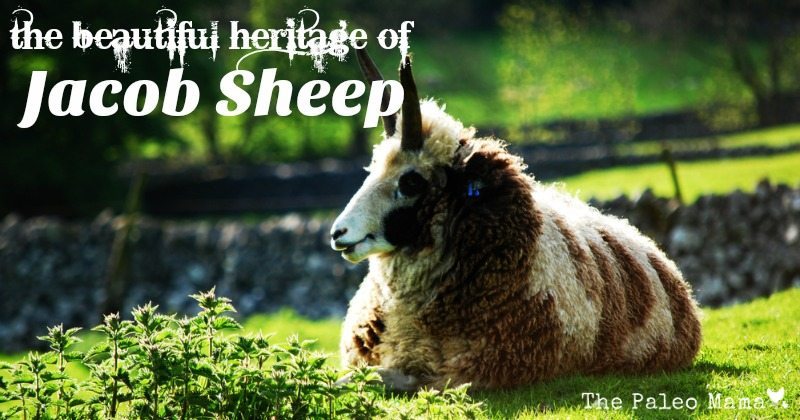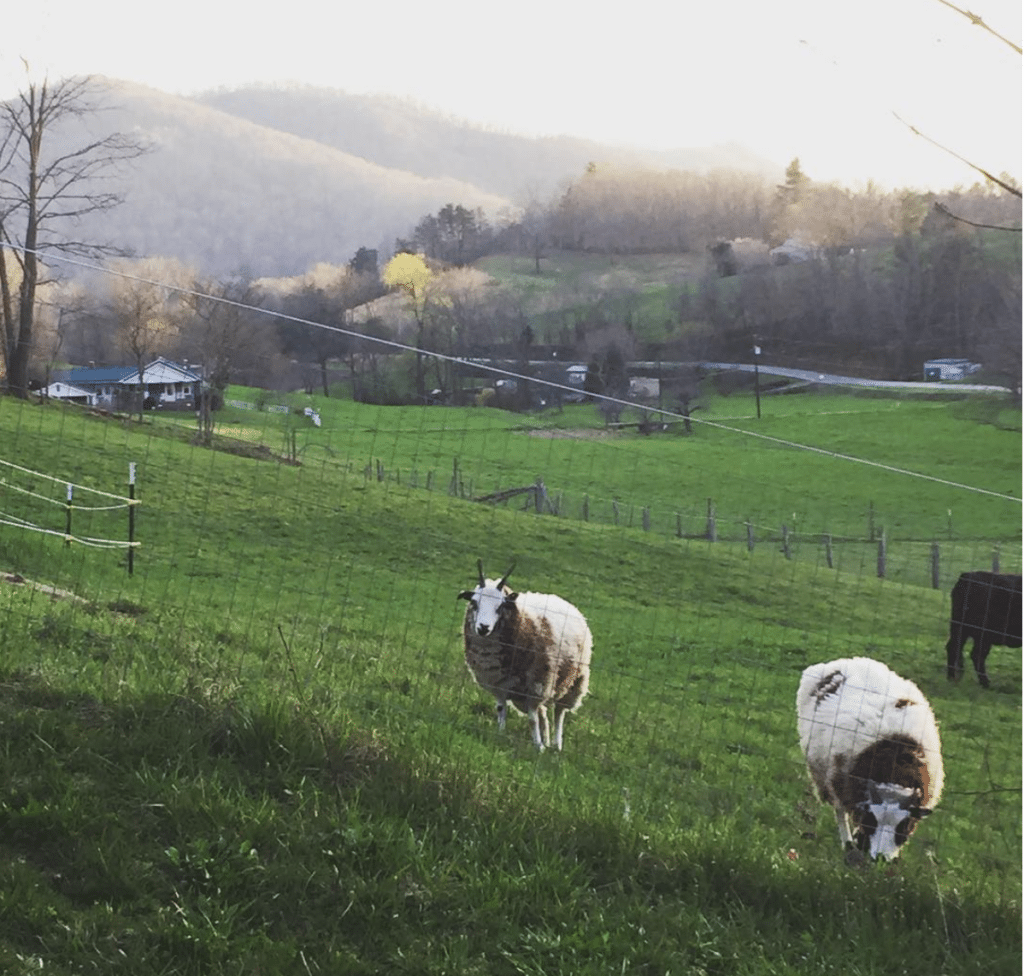
The heritage for the Jacob Sheep Breed goes way back to ancient Syria during Bible times. After Esau tricked Jacob out of his birthright, Jacob fled to his Uncle Laban’s farm on the plain of Aram (Aram is the Hebrew name for ancient Syria). To win the hand of his love, Rachel, Laban told Jacob to tend his flocks of sheep and goats for seven years. Tricked by his uncle, he ended up working for another seven years for Rachel.
After twenty years, Jacob wanted to return to his homeland. Laban didn’t want him to leave because he was such a good herdsman, but agreed that if he stayed longer he could name his wages. Jacob asked for all the spotted and speckled sheep and goats. Jacob had a dream in which God instructed him to breed only the spotted rams, and this soon resulted in a flock of nearly all spotted offspring. This is one of the oldest documented examples of selective breeding.
Eventually Jacob took his family and large flock of spotted sheep back to Canaan. Later he moved him family and flock to Egypt. Thus the Jacob sheep came to Egypt, and eventually into most of North Africa. From there they went to Europe when the Muslims invaded and conquered Spain in the 8th century. Some of these sheep were eventually taken to England, where they survived as a distinct breed.
Why we chose to raise Jacob Sheep
Our homestead is concentrating on choosing heritage breeds (rare livestock breeds) for our homestead menagerie, and on filling our gardens with heritage and heirloom plants. We understand the importance of heritage—because we are the benefactors of our own rich heritage from our ancestors. Heritage breeds store a wealth of genetic resources that are important for tomorrow—heritage animals and plants are the seed of yesterday that will build a better tomorrow.
Jacob sheep are an ideal breed for our smaller homestead, and have many desirable features and benefits for us. They are prolific breeders, and are noted for their easy lambing attributes. The ewes are great mothers, and produce more than enough milk for their lambs without supplementary feeding. They are hardy and long-lived, and easily raised outdoors. They have very few disease problems.

It addition to their breeding qualities, their meat is high-quality and very flavorful. It is low in fat, high in Omega-3, tender, and mild in flavor. They also produce high quality wool, which is excellent for spinning and weaving. The unique color of the wool makes it very useful for a variety of goods, including rugs and sweaters. We were able to get 9 pounds of beautiful wool from our three Jacob sheep this year, and I plan on making wool dryer balls and felted goat milk soap with some of it. We will send the rest of it to be processed into yarn, which we can sell at our farm store and farmer’s market (unless I can bribe friends to make me things).
Breed Characteristics

Jacob sheep are deep-bodied, and white with well-defined black patches. The head and neck are generally black with a white blaze on the face that extends down the chest. Both sexes are horned. A symmetrical blaze is preferred, with a dark nose, dark eyes, and black cheeks and ears. Jacob sheep are always horned, usually with two or four horns. Where there are four, the top pair should grow upward and have no forward growing tendencies. Black horns are preferred. The back should be straight, and level from the base of the neck to the tail, which should be broad. The neck should be strong, and the thighs well-developed. The fleece should be of medium quality, with pink skin beneath the white wool, and black skin beneath the dark wool.
Jacob sheep are the perfect breed for small farms that have good grassy pastures for them to forage on. Because they are browsers, not specifically grazers, they do well on grassy pastures but prefer a diverse diet that includes brush, shrubs, trees, and weeds; not unlike goats. They have calm, sweet personalities, and kids love them. Their light weight and small hooves are beneficial to the land. Jacobs are a smart breed of sheep and can easily be taught to follow a bucket of grain and lead with halter and rope, and they make good pals for young and old alike.
Caring for Jacob Sheep
Our Jacob sheep are pretty easy to take care of. They love to forage on our pastures with lots of grass, and higher elevations of brush, trees, and weeds. They don’t really need any supplemental feeding of grain, unless they are a lactating ewe. We spoil ours a little with alfalfa pellets at night to encourage them to come down from the mountain and into our nighttime secure paddock. We give our sheep plenty of fresh, clean drinking water. We also provide them with a mineral block that is labeled for “sheep”.
Our sheep will be grazing year-round, unless we have uncharacteristic very cold times in the winter. They will have access to shelter in our barn or outbuildings if necessary, with straw bedding to keep them warm.
Harvesting Jacob Sheep Meat
Jacob sheep meat is sought after by many top chefs and restaurants. The finished lamb is tender and lean with an excellent flavor with a good meat to bone ratio. It does not develop a “gamey” taste, and is considered one of the best tasting lamb around. Because they are a smaller breed, a sheep harvested at approximately 1- ½ years will give 60-65 pounds of meat, cut and wrapped. They can be harvested whenever you want their meat, from just a few months old to older ewes and rams.
There are many wonderful ways to prepare the meat for eating. We are just starting our journey in raising Jacob sheep, but here are some great-sounding recipes from experienced shepherds.
Lamb Chops with Red Wine Reduction
Fat Toaster Farm’s Jacob sheep lamb chops sounds delicious. It has hints of middle eastern spices, and can be prepared in less than 30 minutes.
Ingredients
- 6-8 small lamb chops (cut 3/4″ – 1″ thick)
- 1 cup of your favorite red wine
- 1 Tbs butter
- 2 Tbs canola oil
- 2 Tbs garlic powder
- 1 tsp dried thyme
- 1/2 tsp ground cardamom
- 1/4 tsp cinnamon
- 1 tsp salt
- pinch of fresh ground pepper
CLICK HERE to go to the full recipe! Wonderful when served with creamy au gratin potatoes or your favorite vegetable.
Roast Baby Lamb
Traditionally served during Lent, this recipe from Lidia Bastianich and Jay Jacobs in their book, La Cucina Di Lidia, also sounds worth trying.
Ingredients
- 5-pound baby lamb shoulder with bone, cut into 2″ cubes
- 2 ribs celery, coarsely chopped
- 2 medium carrots, coarsely chopped
- 1 large onion, sliced
- 1 cup dry white wine
- 1/2 cup olive oil
- 1/4 cup balsamic vinegar
- 3 small sprigs fresh rosemary
- 1/4 teaspoon freshly ground pepper
- 1/2 teaspoon salt
- 2 cups beef stock
CLICK HERE to see the full recipe!
Gyros Burgers
This is a Greek/American lamb and beef mixture version of the traditional Greek pork or lamb Gyros. It is served on warm pita bread with tzatziki sauce, and thinly sliced onion, tomato, and lettuce.
Ingredients
- 1/2 pound lean ground beef
- 1/2 pound lean ground lamb
- 2 cloves garlic, pressed
- 1 slice bread, toasted and crumbled
- 1/2 teaspoon dried savory
- 1/2 teaspoon ground allspice
- 1/2 teaspoon ground coriander
- 1/2 teaspoon salt
- 1/2 teaspoon ground black pepper
- 1 dash ground cumin
CLICK HERE to see the full recipe!
Preserving the Breed
We love being a part of the small group of people in the United States who are interested in preserving this ancient breed of sheep. Jacob sheep in the United States are descendents of this breed that dates back centuries. They still have many of the instinctive traits that have been lost on newer breeds. One breeder even says, “Jacob sheep can think.” It’s with a great deal of personal satisfaction and pleasure that I look out on my pasture early in the morning and see my Jacob’s sheep grazing in the beautiful, hilly pasture at the foothills of the mountains just beyond.

Leave a Reply